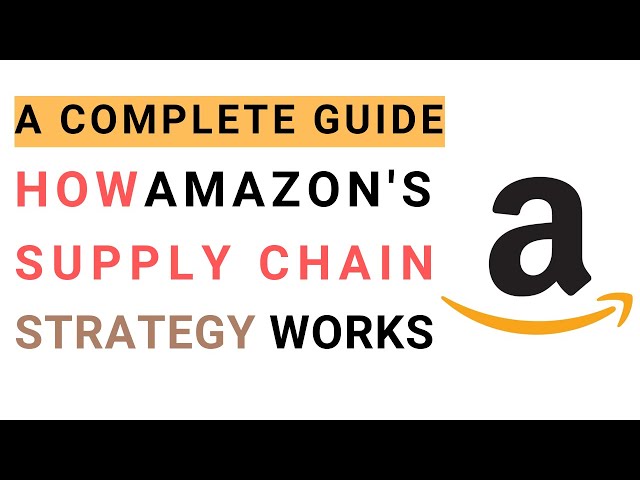What is an Agile Supply Chain Strategy?
An agile supply chain is flexible and responsive and is able to quickly adapt to changing conditions and customer demands. Agile supply chains are characterized by their ability to respond quickly to changes in demand, supply, and market conditions, and to adjust their operations accordingly.
There are a number of key characteristics that define an agile supply chain, including:
- Speed: Agile supply chains are designed to be fast, allowing organizations to quickly respond to changes in demand and supply.
- Flexibility: Agile supply chains are flexible, allowing organizations to adjust their operations to meet changing customer needs and market conditions.
- Visibility: Agile supply chains have high levels of visibility, allowing organizations to track the movement of goods and materials through the supply chain in real-time.
- Collaboration: Agile supply chains are based on collaboration and partnerships, with organizations working closely with suppliers, customers, and other stakeholders to meet their needs.
- Innovation: Agile supply chains are innovative, with organizations continuously seeking new ways to improve their operations and meet the needs of their customers.
Overall, agile supply chains are designed to be highly flexible and responsive, enabling organizations to quickly adapt to changing conditions and meet the needs of their customers.
Advantages and Disadvantages
There are a number of potential advantages to using an agile supply chain, including:
- It allows organizations to respond more quickly to changing customer demand and market conditions.
- It helps organizations reduce inventory levels and improve efficiency by producing smaller batch sizes and more frequent deliveries.
- It helps organizations reduce the risk of obsolescence and excess inventory by being more responsive to changing demand.
- It can help organizations reduce costs by reducing the amount of inventory they need to hold and the associated storage and handling costs.
There are also some potential drawbacks including:
- It may require significant changes to an organization’s production processes and logistics systems.
- It may require increased coordination and communication within the supply chain to ensure that the necessary components and raw materials are available when needed.
- It may not be appropriate for all types of products or industries.
- It may increase the complexity of the supply chain and increase the risk of disruptions or errors.
Cost Savings:
An agile supply chain can help organizations save money by allowing them to respond more quickly to changing customer demand and market conditions, reducing inventory levels, and reducing the risk of obsolescence and excess inventory.
By being more responsive to changing demand, an agile supply chain can help organizations reduce the risk of producing products that do not meet current customer demand, which can lead to lower inventory levels and reduced storage and carrying costs.
By producing smaller batch sizes and more frequent deliveries, an agile supply chain can help organizations reduce inventory levels and improve efficiency, leading to lower inventory costs and improved cash flow.
Finally, by being more responsive to changing demand, it can help organizations reduce the risk of obsolescence and excess inventory, which can lead to lower inventory costs and improved cash flow.
In this video Dr. Rodney Thomas explains the agile supply chain strategy. This is an eight minute video that dives right into agile supply chain.
Further Information on Agile Supply Chain Strategy.
An agile supply chain strategy is a approach to supply chain management that emphasizes flexibility, adaptability, and the ability to quickly respond to changes in supply and demand. It is based on the principles of risk minimization and preparation, and aims to reduce the likelihood of serious supply chain disruptions.
Here are some of the key characteristics of an agile supply chain:
- Real-time visibility: Rely on real-time data and information to make decisions. This means having visibility into all aspects of the supply chain, from suppliers to customers.
- Collaboration: Built on collaboration between all partners in the supply chain. This includes suppliers, manufacturers, distributors, and retailers.
- Resilience: Agile supply chains are designed to be resilient to disruptions. This means having a plan in place to deal with unexpected events, such as natural disasters or cyberattacks.
- Flexibility: Flexible enough to adapt to changes in demand. This means being able to quickly increase or decrease production, or to switch to different suppliers.
The benefits of an agile supply chain strategy include:
- Reduced costs: Agile supply chains can help to reduce costs by minimizing waste and optimizing inventory levels.
- Improved customer service: Can help to improve customer service by providing faster delivery times and more accurate information about product availability.
- Increased agility: Can help businesses to be more agile and responsive to changes in the market.
- Enhanced risk management: Agile supply chains help reduce the risk of disruptions.
There are a number of challenges to implementing an agile supply chain strategy, including:
- Cost: Can be more expensive to implement and maintain than traditional supply chains.
- Complexity: Can be more complex to manage than traditional supply chains.
- Data requirements: Require real-time data and information, which can be difficult to obtain and manage.
Despite the challenges, agile supply chain strategies can be a valuable tool for businesses that are looking to improve their efficiency, customer service, and agility.
Here are some examples of companies that have implemented agile supply chain strategies:
- Amazon: Amazon is known for its fast and efficient delivery times. This is achieved through its agile supply chain, which uses real-time data and information to coordinate the movement of goods from suppliers to customers.
- Nike: Nike is another company that has implemented an agile supply chain. This has allowed it to quickly respond to changes in demand for its products, such as the recent surge in demand for sneakers during the COVID-19 pandemic.
- Apple: Apple is known for its innovative products. Its agile supply chain allows it to quickly bring new products to market, such as the latest iPhone or iPad.
If you are considering implementing an agile supply chain strategy, there are a number of things you need to do:
- Assess your current supply chain and identify areas where you can improve agility.
- Develop a plan to implement the changes you need to make.
- Get buy-in from all stakeholders in your supply chain.
- Monitor and evaluate your progress and make adjustments as needed.
Continuous Improvement Quotes
- “The world we have created is a product of our thinking; it cannot be changed without changing our thinking.” ~Albert Einstein
- “All we are doing is looking at the time line, from the moment the customer gives us an order to the point when we collect the cash. And we are reducing the time line by reducing the non-value adding wastes.” ~Taiichi Ohno.
- “It’s better to hang out with people better than you. Pick out associates whose behavior is better than yours and you’ll drift in that direction.” ~Warren Buffett
- “Change does not roll in on the wheels of inevitability, but comes through continuous struggle. “ ~Martin Luther King, Jr.
- “Globalization has taken a hit in that there is some sand in the gears because most of us have supply chains that are all over the world that we’ve had to lengthen.” ~Jack Welch
- “Supply Chain is like nature, it is all around us.” ~Dave Waters
- “If you do not know how to ask the right question, you discover nothing.” ~W. Edwards Deming
- “Progress is impossible without change; and those who cannot change their minds cannot change anything.” ~George Bernard Shaw
Business Strategy Training
- Achieving SCM Transparency
- Lean Manufacturing Quotes.
- Lean Manufacturing: The Path to Success with Paul Akers.
- Pros and Cons of outsourcing.
- Supplier Selection and Certification.
- SCM Training & Overview
- Supply Chain and Strategy Key Concepts
- The Best Continuous Improvement Quotes
- Understand Lean and Agile Supply Chain strategies.
- What is Supply Chain? How can we Design them?


